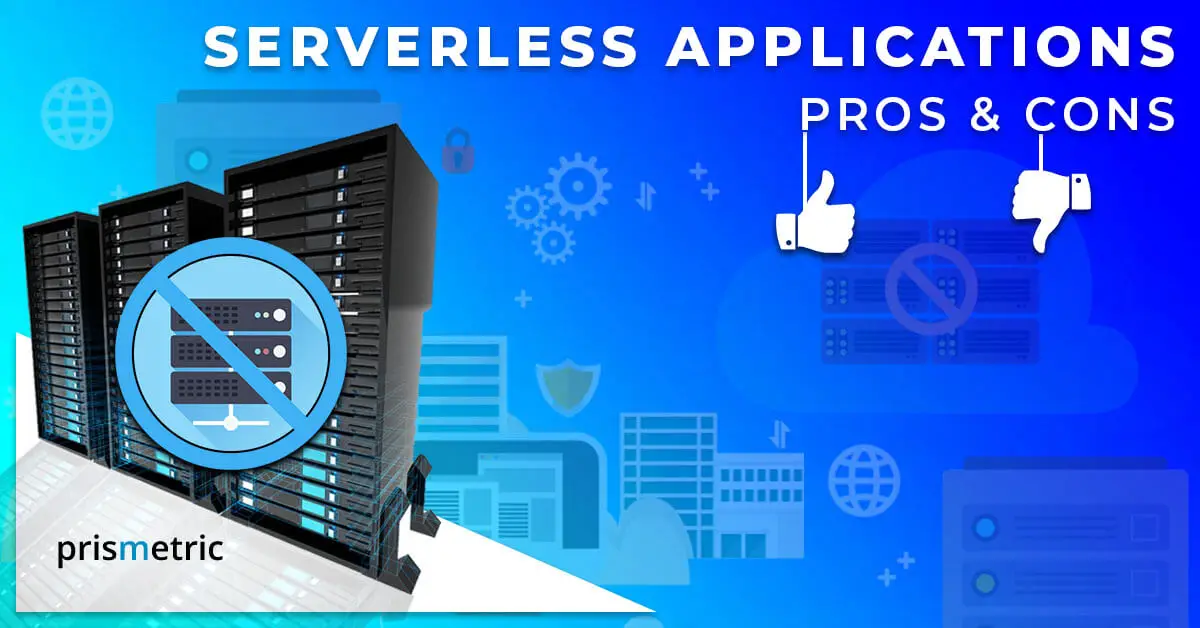In the past few years, especially after Amazon Web Services (AWS) introduced its Lambda platform, serverless architecture became the business realm’s buzzword. The increasing popularity of serverless applications saw market leaders like Netflix, Airbnb, Nike, etc., adopting the serverless architecture to handle their backend functions better. Moreover, serverless architecture’s market size is expected to reach a whopping $9.17 billion by the year 2023.
Why use serverless computing?
As a business it is best to approach a professional mobile app development company to build apps that are deployed on various servers; nevertheless, businesses should understand that the benefits of the serverless applications lie in the possibility it promises ideal business implementations and not in the hype created by cloud vendors. With the serverless architecture, the developers can easily code arbitrary codes on-demand without worrying about the underlying hardware.
But as is the case with all game-changing trends, many businesses opt for serverless applications just for the sake of being up-to-date with their peers without thinking about the actual need of their business.
The serverless applications work well with stateless use cases, the cases which execute cleanly and give the next operation in a sequence. On the other hand, the serverless architecture is not fit for predictable applications where there is a lot of reading and writing in the backend system.
Another benefit of working with the serverless software architecture is that the third-party service provider will charge based on the total number of requests. As the number of requests increases, the charge is bound to increase, but then it will cost significantly less than a dedicated IT infrastructure.
Defining serverless software architecture
In serverless software architecture, the application logic is implemented in an environment where operating systems, servers, or virtual machines are not visible. Although where the application logic is executed is running on any operating system which uses physical servers. But the difference here is that managing the infrastructure is the soul of the service provider and the mobile app developer focuses only on writing the codes.
There are two different approaches when it comes to serverless applications. They are
- Backend as a service (BaaS)
- Function as a service (FaaS)
1. Backend as a service (BaaS)
The basic required functionality of the growing number of third party services is to provide server-side logic and maintain their internal state. This requirement has led to applications that do not have server-side logic or any application-specific logic. Thus they depend on third-party services for everything.
Moreover, other examples of third-party services are Autho, AWS Cognito (authentication as a service), Amazon Kinesis, Keen IO (analytics as a service), and many more.
2. Function as a Service (FaaS)
FaaS is the modern alternative to traditional architecture when the application still requires server-side logic. With Function as a Service, the developer can focus on implementing stateless functions triggered by events and can communicate efficiently with the external world.
FaaS serverless architecture is majorly used with microservices architecture as it renders everything to the organization. AWS Lambda, Google Cloud functions, etc., are some of the examples of FaaS implementation.
Pros of Serverless applications
There are specific ways in which serverless applications can redefine the way business is done in the modern age and has some distinct advantages over the traditional could platforms. Here are a few –
🔹 Highly Scalable
The flexible nature of the serverless architecture makes it ideal for scaling the applications. The serverless application’s benefit is that it allows the vendor to run each of the functions in separate containers, allowing optimizing them automatically and effectively. Moreover, unlike in the traditional cloud, one doesn’t need to purchase a certain number of resources in serverless applications and can be as flexible as possible.
🔹 Cost-Effective
As the organizations don’t need to spend hundreds and thousands of dollars on hardware, they don’t need to pay anything to the engineers to maintain the hardware. The serverless application’s pricing model is execution based as the organization is charged according to the executions they have made.
The company that uses the serverless applications is allotted a specific amount of time, and the pricing of the execution depends on the memory required. Different types of costs like presence detection, access authorization, image processing, etc., associated with a physical or virtual server is completely eliminated with the serverless applications.
🔹 Focuses on user experience
As the companies don’t always think about maintaining the servers, it allows them to focus on more productive things like developing and improving customer service features. A recent survey says that about 56% of the users are either using or planning to use the serverless applications in the coming six months.
Moreover, as the companies would save money with serverless apps as they don’t have to maintain any hardware system, it can be then utilized to enhance the level of customer service and features of the apps.
🔹 Ease of migration
It is easy to get started with serverless applications by porting individual features and operate them as on-demand events. For example, in a CMS, a video plugin requires transcoding video for different formats and bitrates. If the organization wished to do this with a WordPress server, it might not be a good fit as it would require resources dedicated to serving pages rather than encoding the video.
Moreover, the benefits of serverless applications can be used optimally to handle metadata encoding and creation. Similarly, serverless apps can be used in other plugins that are often prone to critical vulnerabilities.






